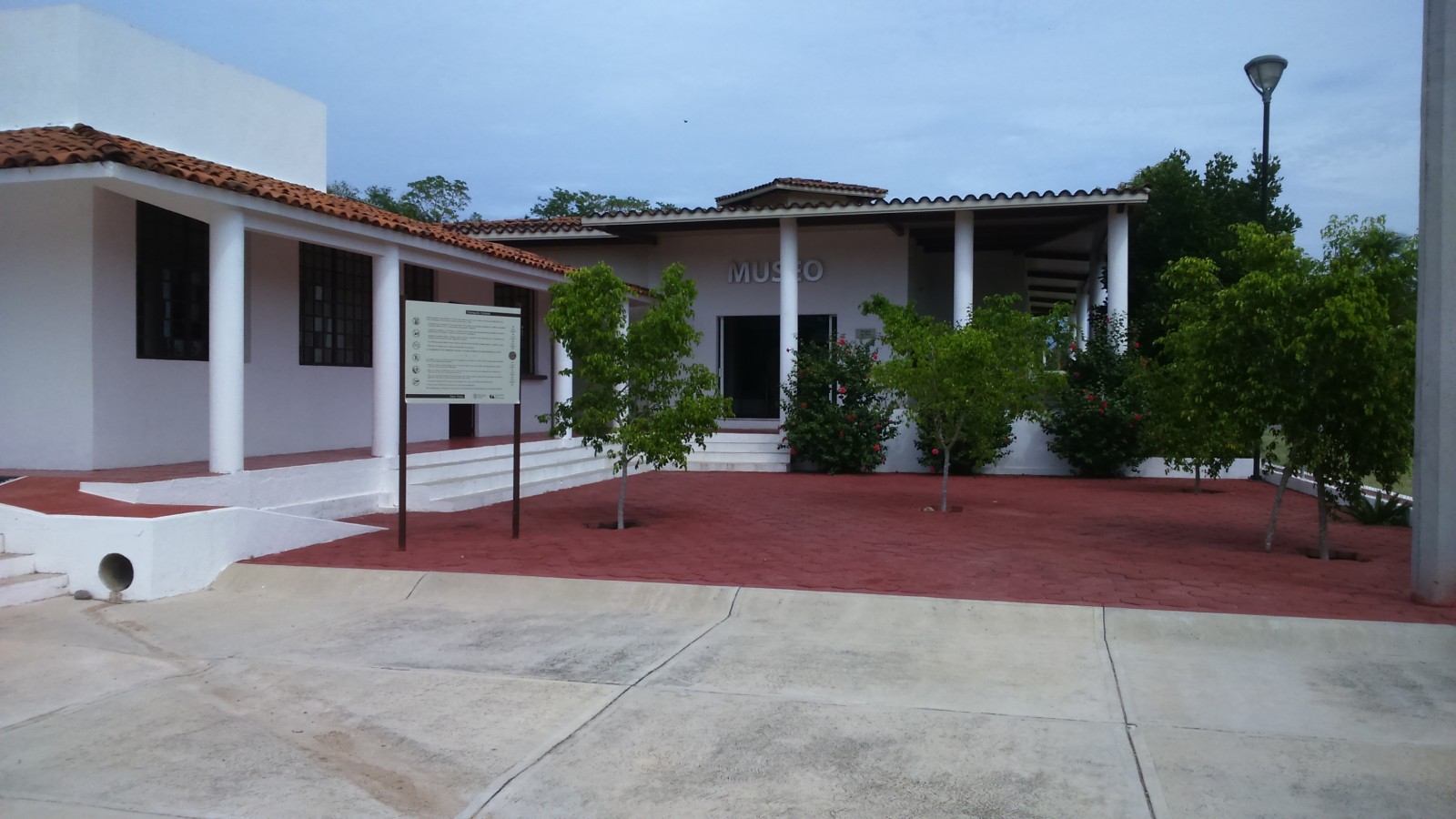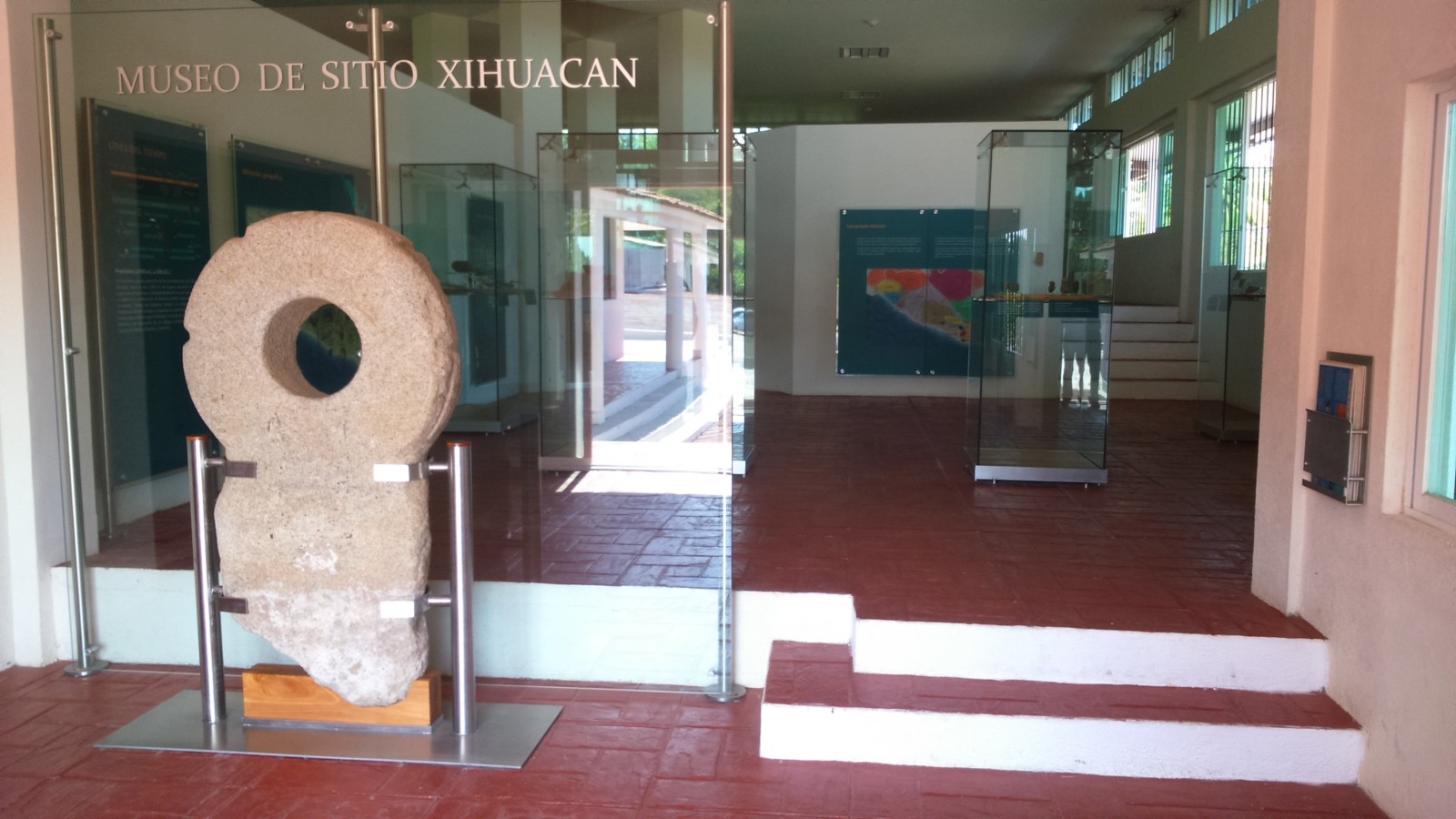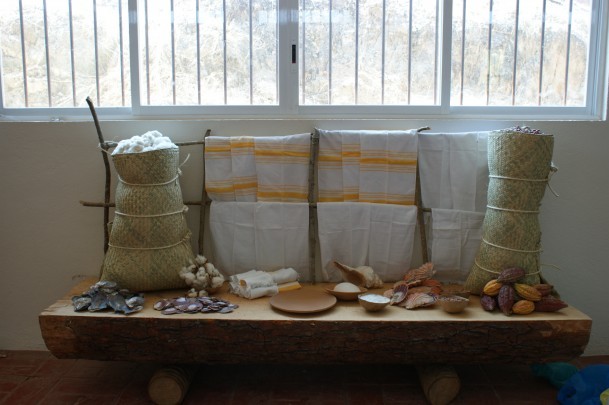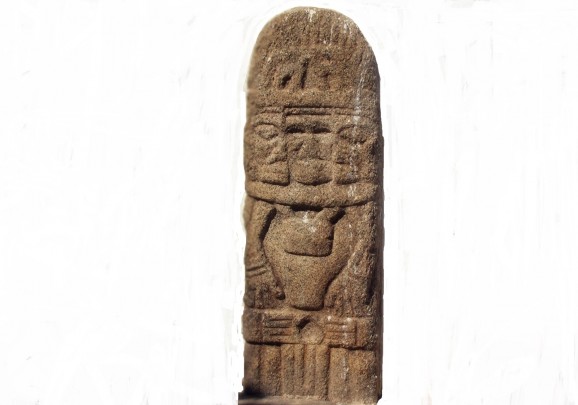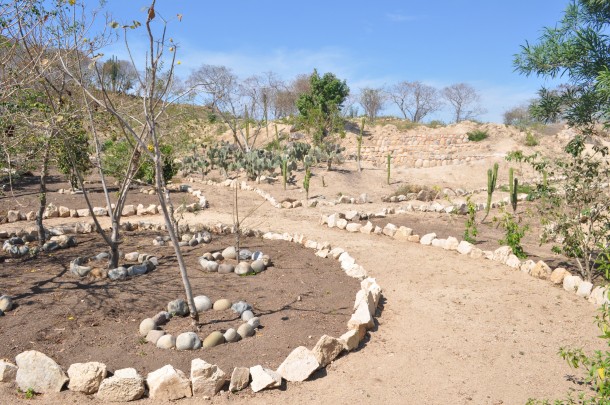Museo de Sitio de la Zona Arqueológica de Soledad de Maciel-Xihuacan
Owners of turquoise, proprietors of the calendar and lords of time. This is how the inhabitants of this ancient city were known. They ruled over the Costa Grande in the modern state of Guerrero and were influenced by Olmec and Teotihuacan cultures, as can be seen in their fine pottery and hydraulic works.
About the museum
The objects on display in the museum include a stone worked with the Xihuacan toponym glyph, which is the name of the site. It measures 3 feet 3 inches high by 1 foot 8 inches wide and 10 inches thick and was found during the recent excavations in the area of the ballcourt. The glyph is circular and it reveals the ancient name of this pre-Hispanic site. Xihuacan is a Nahuatl word which means “place of the owners of turquoise,” which by extension meant “those who control the calendar” and metaphorically “the owners of time.” In this sense, the emblem is associated with the role of this settlement as the dominating force of the Costa Grande. It has also been established that its urban footprint is connected to celestial movements.
The collection of pieces displayed in the site museum includes recent as well as older finds from the site, from the time of the first records and archeological surveys by specialists such as Pedro Hendrichs (1943), Pedro Armillas (1948), Ellen Brush (1968) and Rubén Manzanilla at the end of the 1980s.
The museum focuses on the ancient inhabitants of Soledad de Maciel, Xihuacan. It was inhabited in the Preclassic (2500 BC to 200 AD) and the Classic (200 to 650), reaching its apogee in the Epiclassic (650 to 950), and was still inhabited up to the Early Postclassic (950 to 1300). Evidence suggests that it was gradually abandoned as the result of flooding of the site, which forced the populace to head for higher ground.
Historical sources from the sixteenth century show that this region was occupied by Tepuztec and Cuitlatec groups, although the groups who lived here still cannot be precisely identified. The first inhabitants were farmers who managed to consolidate a stratified society with the passing of time and with enough organization to erect pyramids and create works of hydraulic engineering. The people of Xihuacan were also influenced by the Olmecs, which can be seen from their terracotta and ceramic figures.
The influence of Teotihuacan was felt during the Classic period, and this is reflected in the social complexity and the vigor of Xihuacan. It was during this period that construction began on the great ceremonial complex, which can be appreciated at the site.
A vast array of pre-Hispanic objects are displayed, including figurines, obsidian vessels, shell work, copper axes, and necklaces with rattles, ceramics and stone. The collection is used to illustrate the cultural development of the ancient city, which had close ties with Teotihuacan during the Classic Period (200 to 650).
The collection of pieces displayed in the site museum includes recent as well as older finds from the site, from the time of the first records and archeological surveys by specialists such as Pedro Hendrichs (1943), Pedro Armillas (1948), Ellen Brush (1968) and Rubén Manzanilla at the end of the 1980s.
The museum focuses on the ancient inhabitants of Soledad de Maciel, Xihuacan. It was inhabited in the Preclassic (2500 BC to 200 AD) and the Classic (200 to 650), reaching its apogee in the Epiclassic (650 to 950), and was still inhabited up to the Early Postclassic (950 to 1300). Evidence suggests that it was gradually abandoned as the result of flooding of the site, which forced the populace to head for higher ground.
Historical sources from the sixteenth century show that this region was occupied by Tepuztec and Cuitlatec groups, although the groups who lived here still cannot be precisely identified. The first inhabitants were farmers who managed to consolidate a stratified society with the passing of time and with enough organization to erect pyramids and create works of hydraulic engineering. The people of Xihuacan were also influenced by the Olmecs, which can be seen from their terracotta and ceramic figures.
The influence of Teotihuacan was felt during the Classic period, and this is reflected in the social complexity and the vigor of Xihuacan. It was during this period that construction began on the great ceremonial complex, which can be appreciated at the site.
A vast array of pre-Hispanic objects are displayed, including figurines, obsidian vessels, shell work, copper axes, and necklaces with rattles, ceramics and stone. The collection is used to illustrate the cultural development of the ancient city, which had close ties with Teotihuacan during the Classic Period (200 to 650).
April 2011
Practical information
Tuesday to Sunday from 09:00 to 17:00 hrs.
Free entry
Zona Arqueológica de Soledad de Soledad de Maciel, C.P. 40851, Petatlán, Guerrero, México.
From the city of Acapulco, take Federal Highway 200 in the direction of Zihuatanejo. On the Petatlán-San Jeronimito section, take the road that leads to Soledad de Maciel. The archeological zone and the museum are located 3 km from this turn off.
Services
-
01 (747) 471 71 21
-
This email address is being protected from spambots. You need JavaScript enabled to view it.
-
FACEBOOK
Directory
Director
Arqlgo. Rodolfo Lobato Rodríguez
This email address is being protected from spambots. You need JavaScript enabled to view it.
01 (747) 471 71 21

